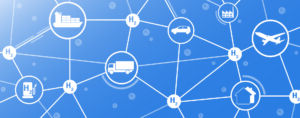Center of Excellence for Clean Energy:
Helping to lead the way in alternative fuels for our future
Helping to lead the way in alternative fuels for our future
By Nancy Aird

On October 24, 2022, Nancy Aird (staff for CoE HSEM) attended the Hydrogen in Focus Conference held at Centralia College hosted by the Center of Excellence for Clean Energy and Twin Transit. Monica Brummer, Director of Coe Clean Energy, is leading a coordinated, strategic approach to clean energy workforce development for the region. She works with regional partners to define energy efficiency, jobs, and skills standards and create a regional clearing house for energy efficiency job openings.
The conference was focused on hydrogen and brought together the WA Dept. of Commerce, the City of Centralia, industries, private partners, and others to discuss hydrogen: fleet transition, workforce development, advancement of industries, and economics. Monica said, “This collaborative group is applying for a 7 billion dollar grant the US Dept. of Energy has created to fund (H2Hubs) across the country.” Currently, California and Hawaii are the only states with this fueling option. Centralia Mayor Kelly Smith Johnson talked about the Centralia regional coast plant shutting down and that the city and region has the infrastructure and experienced technicians available to meet the new employment opportunities that will be developing from hydrogen and other alternative fuels.
Speakers during the conference showed that Washington is starting to develop hydrogens’ role in climate strategy energy policies: energy efficiency, clean electricity, clean fuel, electrification, and carbon sequestration. WA State Legislative Bill 5910 (2021-2022) promotes the acceleration of the availability and use of renewable hydrogen in WA. A Centralia business is proposing opening an H2Hub to fuel buses and large trucks traveling on I-5.
The first hydrogen-powered ferry was recently built at the All-American Marine shipyard in Bellingham, WA, which launches in San Francisco. First Mode, Seattle, WA, created a hydrogen-powered mine hauler conversion for mining in South Africa. Innovators are creating the infrastructure and vehicles for climate change now in Washington.
Hydrogen is the most abundant element in our universe and is used as an energy carrier; therefore, it doesn’t get used up in a fuel cell. Right now, extracting it is not simple. Much of the hydrogen produced in the US comes from the steam-methane reforming method. Green Hydrogen is a climate change fuel source. It is generated by renewable energy or from low-carbon power. Green hydrogen production can scale up or down by using excess energy from alternate sources, i.e., wind and solar. The US goal is set at 6% hydrogen use in the future. Currently, hydrogen accounts for about 1% of US energy, but less than 5% of this total comes from clean sources.
The discussions made me think of the need for emerging alternative fuels as our planet transitions from dependence on non-renewable, crude oil-derived fuels. My further research showed alternative fuels, such as biofuels, fusion, electricity, ethanol, hydrogen, natural gas, propane, steam, kinetic, heat, air, nitrogen, LPG, and more, are being proposed as creative thinkers seek to solve the issue. Each alternate fuel has proponents saying look at this option. For example, fusion as a fuel has been developing in this state.
Monica said, “Washington State has the largest concentration of independent fusion companies in the world. We have four separate companies working on four different methodologies to bring fusion into the alternate fuel future. A sustainable fusion reaction is still the critical need to go commercial.”
Each fuel may have a role in the future, and each can be used in conjuncture as a piece of the energy wheel. The Centers of Excellence look forward to keeping you updated on future conferences and energy developments.
RESOURCES FOR CLEAN ENERGY
Clean Energy Trends
Gov. Inslee’s climate policy for 2021-23
Mechatronics in Washington State: Manufacturing, Energy, and Marine Sectors,
Smart Grid Skills for the Energy Workforce
Greener Reality: Jobs, Skills, and Equity in a Cleaner U.S. Economy
Growing Washington’s Green Economy: Progress, Opportunities and Challenges
Greener Skills: How Credentials Create Value in the Clean Energy Economy
Renewable Energy Industry Trends and Workforce Development in Washington State
Labor Market Data
2018 U.S. Energy and Employment Report
The Washington Jobs Project: A Guide to Creating Jobs in Grid Modernization
Workforce Challenges of the Electric Power Employers in the Pacific Northwest
The Shocking Truth About the Skills Gap
WSU Energy Program—Workforce Development Reports
2009 Washington State Green Economy Jobs
Green Jobs in Washington State: Progress, Opportunities and Challenges
2008 Washington State Green Economy Jobs
Workforce challenges of Electric Sector Employers in Washington and Oregon
The Center of Excellence for Clean Energy is a statewide resource that represents the interests of the energy industry, and our labor partners, within the Washington State Community and Technical College system. We exist to narrow the gap between employers’ demands for a highly skilled workforce and the colleges’ ability to supply work-ready graduates. We convene industry and labor to help drive workforce development initiatives — and coordinate community college resources after industry and labor set the direction.
The Center leads a coordinated, strategic approach to clean energy workforce development for the region and works with regional partners to: define energy efficiency jobs, establish skill standards and identify job classifications, and create a regional clearinghouse for energy efficiency job openings.

